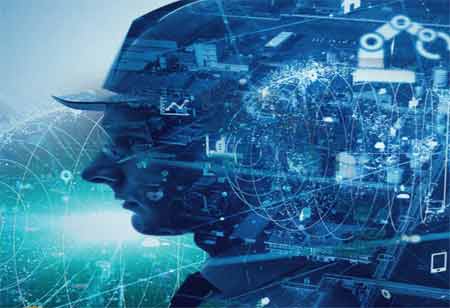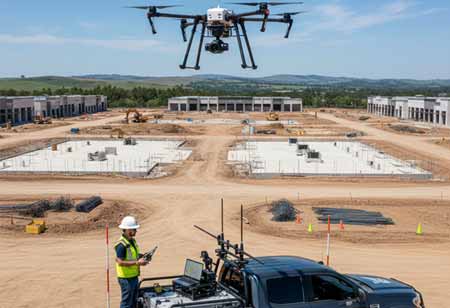THANK YOU FOR SUBSCRIBING
Be first to read the latest tech news, Industry Leader's Insights, and CIO interviews of medium and large enterprises exclusively from Applied Technology Review
Emerging Trends in Future Sensor Technology
The progression of sensor technology is sculpting a future focused on biocompatible materials,

By
Applied Technology Review | Monday, May 27, 2024
Stay ahead of the industry with exclusive feature stories on the top companies, expert insights and the latest news delivered straight to your inbox. Subscribe today.
Advancements in sensor technology promise transformative impacts across industries, emphasizing ethical, privacy, and security considerations for responsible integration into society.
FREMONT, CA: The progression of sensor technology is sculpting a future focused on biocompatible materials, wireless connectivity, and advanced analytics, driving a revolution in healthcare. This transformative era facilitates personalized monitoring and early ailment detection. Sensors play a crucial role in an increasingly data-driven and automated world, gathering real-time data essential for diverse applications, from environmental monitoring to healthcare diagnostics.
Miniaturization and Integration
Miniaturization remains a dominant trend in sensor technology. Smaller sensors facilitate seamless integration into various devices, enhancing portability and versatility. Moreover, integrated sensors within multifunctional systems are becoming commonplace, reducing space requirements and enabling novel applications.
Internet of Things (IoT) Integration
The proliferation of IoT devices continues to drive sensor technology forward. Sensors are integral to IoT ecosystems, enabling connectivity and data exchange between devices. Deeper integration of sensors into IoT infrastructure is promoting broader data analytics and automation capabilities.
Wearable Sensors
Wearable sensor technology is poised for exponential growth, transforming healthcare, fitness, and beyond. Advances in flexible and stretchable electronics facilitate the development of wearable sensors capable of monitoring vital signs, movement, and environmental factors in real time, empowering personalized health management and performance optimization.
Biometric Sensors
Biometric sensors are rapidly advancing, enabling seamless identification and authentication processes. From fingerprint and facial recognition to voice and iris scanning, biometric sensors offer enhanced security and convenience across various applications, including access control, payment systems, and personalized devices.
Environmental Sensors
Environmental sensors play a crucial role in monitoring and mitigating the impact of climate change and pollution. Deploying advanced environmental sensors for real-time monitoring of air quality, water pollution, and soil health is anticipated to enable proactive measures to safeguard the environment and public health.
Smart Agriculture Sensors
Smart agriculture relies heavily on sensor technology to optimize crop yield, minimize resource usage, and mitigate risks. In smart agriculture, sensors incorporate the integration of drones and satellite imagery for precision farming, along with the development of sensors capable of monitoring soil moisture, nutrient levels, and plant health with unparalleled accuracy.
Autonomous Vehicles Sensors
Autonomous vehicles rely on various sensors for navigation, obstacle detection, and situational awareness. Advancements in LiDAR, radar, and camera sensors pave the way for improved perception capabilities, allowing autonomous vehicles to safely and efficiently navigate complex environments.
Health Monitoring Implants
Implantable sensors represent a transformative technology in healthcare, enabling continuous monitoring of physiological parameters within the body. Advancements in health monitoring implants involve creating biocompatible materials, enabling wireless communication, and implementing sophisticated analytics algorithms. This progression is leading to a paradigm shift in personalized medicine and the early detection of diseases.
Quantum Sensors
Quantum sensors harness the principles of quantum mechanics to achieve unprecedented levels of sensitivity and precision. They are used in imaging and environmental monitoring, where applications ultra-sensitive detection capabilities are paramount.
Energy Harvesting Sensors
Energy harvesting leverages ambient energy sources, such as light, vibration, and heat, to power themselves autonomously. Energy harvesting sensors focus on improving efficiency and scalability, enabling widespread deployment in remote or inaccessible locations for long-term monitoring applications.
Transparent Sensors
Developing flexible and transparent electronics in sensors will enable seamless integration into everyday objects and surfaces without compromising aesthetics or functionality. This advancement holds immense potential for augmented reality, innovative glass technology, and transparent displays.
Chemical Sensors
Chemical sensors are becoming more selective, sensitive, and faster in response times. These improvements enable the quick and precise detection of numerous industries' pollutants, explosives, and hazardous substances.
Soft Sensors
Flexible and stretchable materials used in sensors provide distinct benefits for wearable and biomedical applications. Current developments aim to improve durability, biocompatibility, and conformability, allowing for comfortable and noninvasive real-time monitoring of physiological parameters.
Neuromorphic Sensors
Neuromorphic sensors mimic the structure and functionality of the human nervous system, enabling efficient information processing and pattern recognition. Applications in robotics, prosthetics, and brain-computer interfaces increasingly rely on neuromorphic sensors for their real-time feedback and adaptability.
Cognitive Sensors
Cognitive sensors combine sensor data with artificial intelligence algorithms to interpret and contextualize information intelligently. Advancements in cognitive sensors involve improvements in machine learning and pattern recognition techniques, facilitating autonomous decision-making and adaptive behavior in systems equipped with these sensors.
5G-Enabled Sensors
The rollout of 5G networks is set to revolutionize sensor technology, enabling ultra-low latency communication and massive device connectivity. In 5G-enabled sensors, upcoming advancements include real-time data streaming, edge computing capabilities, and enhanced security protocols. These developments will unlock new possibilities in remote monitoring, autonomous systems, and smart infrastructure.
Printable Sensors
Printable sensors, fabricated using additive manufacturing techniques, offer cost-effective and scalable solutions for sensor production. Creating innovative materials and printing techniques will enable quick prototyping and customization for diverse uses, such as disposable biosensors and extensive sensor arrays.
Self-Healing Sensors
Self-healing sensors repair damage and restore functionality autonomously, prolonging their lifespan and reliability. Self-healing sensors' development incorporates dynamic materials and healing mechanisms, allowing sensors to endure harsh environments and mechanical stress while sustaining optimal performance.
Swarm Sensors
Swarm sensors leverage collective intelligence and distributed sensing networks to achieve robustness and scalability. Approaches to swarm sensors include collaborative sensing methods, adaptive networking protocols, and decentralized decision-making algorithms. These innovations enable self-directed coordination and robustness in large-scale sensor installations.
Ethical and Privacy-Enhancing Sensors
Ethical considerations and privacy concerns are increasingly crucial in sensor technology development and deployment. Moral and privacy-enhancing sensors include transparent data governance frameworks, anonymization techniques, and user-centric design principles, ensuring responsible and accountable use of sensor data while safeguarding individual privacy rights.
Biomimetic Sensors
Biomimetic sensors draw inspiration from nature to design sensors with enhanced sensitivity, adaptability, and efficiency. It includes bio-inspired materials, structures, and sensing mechanisms, enabling innovative solutions in environmental monitoring, robotics, and medical diagnostics.
The future of sensor technology holds immense promise, driven by advances in miniaturization, integration, and emerging technologies such as IoT, wearables, and quantum sensing. From healthcare and agriculture to automotive and environmental monitoring, sensors are poised to transform countless industries, enabling smarter, safer, and more sustainable solutions for the challenges of tomorrow.
I agree We use cookies on this website to enhance your user experience. By clicking any link on this page you are giving your consent for us to set cookies. More info








